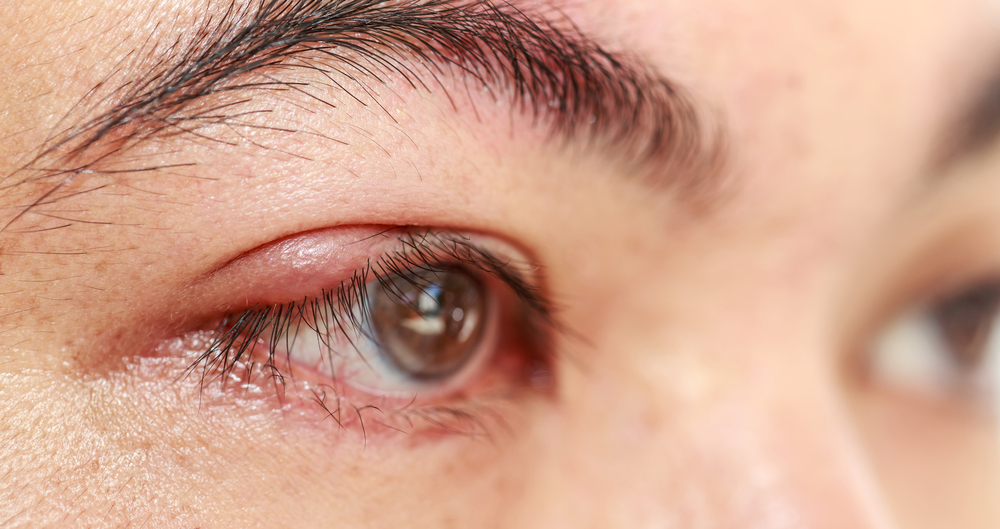
A stye (also known as hordeolum) is a painful, red bump that forms on the edge of the eyelid. It's often filled with pus and can be quite uncomfortable, causing a gritty sensation in the eye, tearing, and sensitivity to light. However, it's important to understand that not every bump or lump on the eyelid is a stye. Other conditions, such as chalazia, can mimic the appearance of styes.
What Triggers a Stye?
One of the primary causes of an eye stye is an infection with Staphylococcus bacteria. These bacteria are often found in the nose, and can easily be transferred to the eye if you touch your nose and then your eye.
In addition, certain conditions can predispose you to developing styes. For instance, individuals with chronic blepharitis or rosacea are more likely to get styes. Also, using old or expired cosmetics, or not properly removing eye makeup, can lead to stye formation.
Other potential triggers include stress, hormonal changes, poor nutrition, and lack of sleep. All these factors can weaken your immune system, making you more susceptible to infections, including those that cause styes.
Understanding Meibomian Gland Dysfunction
The meibomian glands are tiny oil glands that line the edge of the eyelids. These glands secrete oil into the tear film, which prevents the tears from evaporating too quickly. Meibomian gland dysfunction (MGD) occurs when these glands get blocked or produce poor-quality oil. This can lead to a variety of problems, including dry eyes and the formation of eye styes.
In cases of MGD, the gland openings can become clogged with oil, dead skin cells, or bacteria. This can cause the gland to swell, leading to the formation of a lump or bump on the eyelid – a potential precursor to an eye stye.
Treatment Options for Styes
When it comes to treatment options for eye styes, the first line of defense is usually a warm compress. Applying a warm compress to the affected eye for 10-15 minutes, several times a day, can help speed up the healing process. The warmth helps to soften the oil in the blocked gland, encouraging it to drain naturally.
In some cases, your doctor may prescribe antibiotic eye drops or ointments to help fight the infection. If a stye doesn't improve with these treatments or is particularly large or painful, your doctor may need to drain it surgically.
It's important not to try to pop a stye yourself, as this can spread the infection and potentially damage your eye.
Strategies to Prevent Styes
Preventing eye styes involves some simple, yet effective steps. Maintaining good eye hygiene is key. This includes washing your hands regularly, especially before touching your eyes, removing all makeup before bed, and regularly cleaning your contact lenses.
If you have a condition like MGD or blepharitis, managing it effectively can also help prevent styes. This may involve using warm compresses, massaging your eyelids, or using prescribed medications or treatments.
A healthy lifestyle can also go a long way in preventing styes. Eating a balanced diet, getting regular exercise, ensuring enough sleep, and managing stress can all help to boost your immune system and reduce your susceptibility to infections.
When to Seek Professional Help
While most styes resolve on their own, it's important to know when to seek professional help. If a stye doesn't improve after a few days of home treatment, or if it gets worse, it's time to see a doctor.
Also, if you experience severe pain, vision problems, or if the stye affects the entire eyelid, you should seek medical attention immediately. These could be signs of a more serious infection that needs prompt treatment.
Managing Styes Effectively
Living with eye styes can be uncomfortable, but with the right knowledge and care, you can manage them effectively and prevent future ones. Understanding what triggers an eye stye, from MGD to poor eye hygiene, allows you to take proactive measures to avoid these triggers.
To learn more on triggers and treatment options for styes, visit Enclave Vision at our office in Houston, Texas. Please call or text 281-759-3937 to schedule an appointment today.











